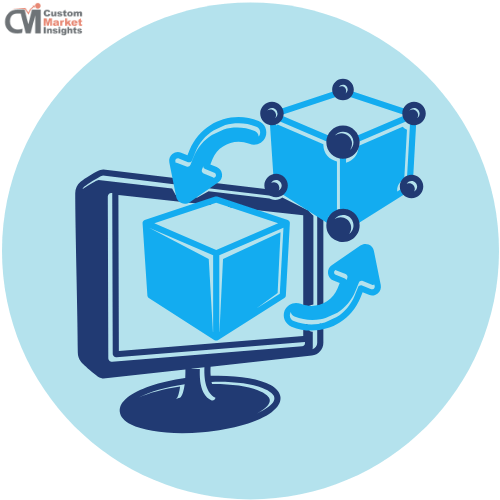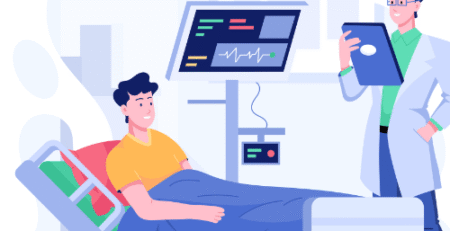The digital twin is a revolutionary new technology that has come about because more and more healthcare organizations are using digital transformation. Using this technology might change the way therapy is given, as well as how it is optimized and tailored to each person. At first, only the aerospace and industrial sectors made digital twins, which are virtual copies of real equipment. More and more healthcare settings are using real-time simulations of things like how patients’ bodies work, how hospitals work, and how treatments work. Hospitals are doing these simulations.
In the healthcare field, the term “digital twin” refers to a virtual model of a patient, medical equipment, or process that changes based on data. It uses three approaches to copy what its real-world equivalent does and how it turns out: real-time data, artificial intelligence (AI), and machine learning. As this technology matures, it is expected to lead to hyper-personalized therapy, the ability to forecast diagnoses, and more efficient operating procedures.
A digital twin and the ways it may be utilized in the area of medicine
A digital twin is a virtual copy of a real item that acquires new information from sensors, records, and devices all the time. A dual digital twin is what this kind of picture is called. In healthcare, typical processes that fall under this category include making a digital model of a patient’s organs, creating a whole physiological model, and simulating a whole hospital system.
The goal of this simulation is to make predictions about the outcomes, see if treatments are working, rate performance, and make care better. This will be done without putting real patients or infrastructure at risk. Creating a digital twin of a patient’s heart lets doctors test several treatments on the digital twin to see which one would work best before they give it to the patient.
Real-time precision medicine is becoming more and more possible because of the usage of Internet of Things (IoT) devices, cloud computing, artificial intelligence, and better modeling methods. This is a big step forward. This is making it easier for the healthcare industry to use digital twins.
Digital Twin Applications in Healthcare That Are Both New and Original
Digital twins might be useful in a number of areas, including therapeutic, operational, and research. Digital twins may be used for a lot of different things.
1. You may make digital twins by using data from electronic health records, imaging scans, wearable gadgets, and forensic laboratory discoveries. This makes it feasible to make personalized therapeutic compositions. By modeling a variety of different therapy scenarios on a patient’s digital twin, doctors can cut down on the amount of trial and error that happens. This lets them choose the treatment scenario that is most likely to work.
2. Surgical simulation and training is a field that lets doctors practice hard surgeries on a digital duplicate of a patient’s body before the real thing. This helps doctors be ready for the therapy ahead of time. This lowers the dangers that come with the treatment by a lot, which in turn makes the outcomes even better.
3. In the realm of medication research and evaluation, pharmaceutical companies employ digital twins to test how drugs interact with certain genetic profiles. The pharmaceutical business is working with us on this. This might speed up the process of finding targets, developing trials, and submitting them to the government. Because of this, it is much easier to do clinical research in a virtual setting, which saves time and money.
The fourth element is about managing hospitals and their equipment. Healthcare professionals can use digital twins of hospital systems to simulate patient flow, bed capacity, and the allocation of resources. This might lead to better planning and operational efficiency, which is especially helpful in times of great need.
The sixth issue is how to deal with long-term illnesses. Digital twins might help people with chronic conditions like diabetes or heart failure by keeping an eye on them all the time. This lets doctors predict how the illness will change and make changes to treatment plans ahead of time to better manage the patient’s health.
There are Certain Problems With Both Scalability And Uptake:
Digital twin technology offers a lot of potential in medicine, but there are a lot of big problems that need to be solved before it can be used. Building an accurate digital model requires overcoming a number of major challenges, such as bringing together data from a wide range of systems, formats, and devices. There are a lot of challenges in standardizing and integrating data.
Digital twins need access to huge volumes of high-quality real-time data, including DNA, photos, and environmental elements, which is much worse. This is a must-do criterion. It is very important to protect the privacy and security of this sensitive data now that legislation like the Health Insurance Portability and Accountability Act (HIPAA) and the General Data Protection Regulation (GDPR) are in place.
Some of the factors that make it hard for a lot of people to use modeling platforms are high development costs, a lack of skilled staff, and limited interoperability between different modeling platforms and existing EHR systems. Another problem is that there aren’t enough specialist professionals who are easy to find. Before digital twin approaches can be widely used in medicine, they must first be proven to be safe and effective through clinical validation and regulatory clearances.
This CMI research looks at both the top players in the industry and how the market changes over time.
As per the current market research conducted by the CMI Team, the global Healthcare Digital Twins Market is expected to record a CAGR of 21.5% from 2024 to 2033. In 2024, the market size is projected to reach a valuation of USD 2,622.1 Million. By 2033, the valuation is anticipated to reach USD 15,129.8 Million. There are a lot of reasons why this is necessary, such as the rising need for personalized care, the need to keep healthcare costs down, and the use of predictive analytics.
The study that CMI has done shows that the digital twin environment is changing quickly. Three main things are propelling the market during this change:
1. Multi-scale modeling: Companies are focusing on making digital twins that show how cancer cells behave at the cellular level, how organs behave at the organ level (like cardiovascular models), and how the whole body behaves. This will make it easier to make a correct diagnosis and schedule treatments.
2. Companies that provide cloud-integrated, scalable solutions are getting ahead of the competition, especially when it comes to running data-heavy applications like digital surgical planning and remote monitoring. This is especially true for systems that are built into the cloud.
3. Collaboration ecosystems: Strategic partnerships between hospitals, AI developers, device makers, and cloud service providers are helping to drive innovation, especially in North America and Europe.
CMI has given awards to several big companies, including Siemens Healthineers, Philips, Dassault Systèmes, GE Healthcare, and Microsoft Azure Digital Twins. These groups are some of the most well-known ones that have been honored. Twin Health and Unlearn. AI are two newer startups that have also been praised for their work. The organizations in question are setting themselves apart from their competitors by using accurate real-time simulations, projections that are improved by AI, and healthcare treatments.
More money is being put into public-private partnerships and open-source modeling frameworks. The European Commission is working on a project called the Digital Twin of the Human Body. This is one example of this. The goal of this project is to produce standardized virtual models that may be used in global health applications.
Future Outlook: Building a Digital-First Healthcare Ecosystem
The future of digital twins will depend on how well they can help create a healthcare environment that is truly digital-first and proactive. Digital twins, together with AI, genetics, and wearable gear, will make it feasible to move away from reactive therapy and toward continuous, preventative, and personalized health care.
Hospitals will utilize digital twins more regularly to practice how to respond to emergencies, make the most of their equipment, and plan out staff duties. Digital avatars controlled by AI will help patients by keeping an eye on their health, suggesting adjustments to their way of life, and letting experts know when their health is getting worse. The CMI research’s results show that the next stage of growth will involve using population health twins, which are digital models that show whole communities, to guide public health policy, resource planning, and safety measures during pandemics. Regulators are also starting to regard digital twins as useful tools for speeding up the approval of drugs and devices through in silico studies. In silico trials are computer simulations that take the place of or cut down on the requirement to test on animals and people.
A Few Last Words: The Future of Healthcare Will Be Both Virtual and Personal
Digital twin technology gives us a clear image of what healthcare will be like in the future. This vision is based on data, can anticipate the future, and is unique to each person. As we keep breaking down data silos and using AI-driven simulations, digital twins will go from being pilot projects to being used in everyday medical practice.
CMI’s market view is that companies that invest in digital twin skills today will have a strategic edge. This benefit will show up not only in how well patients do but also in how well the business can handle problems and lead in innovation. We need to work together, put money into things, and trust each other to get there. The goal is a healthcare system that can almost understand you so that it can treat you as an individual based on that knowledge.
Connect with our Experts


